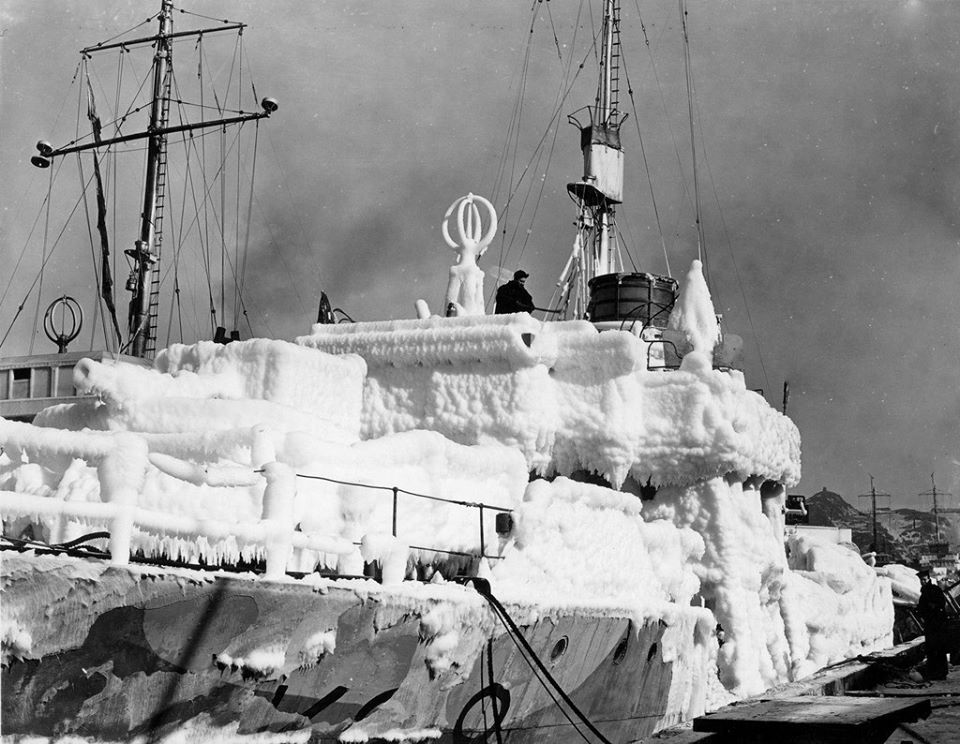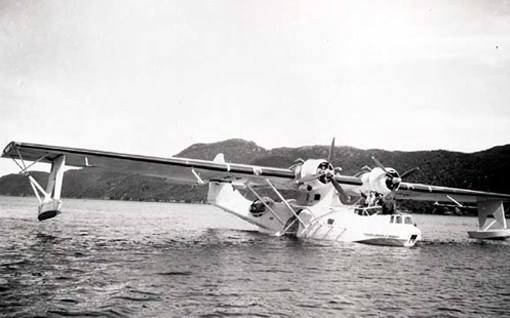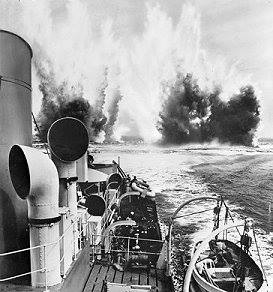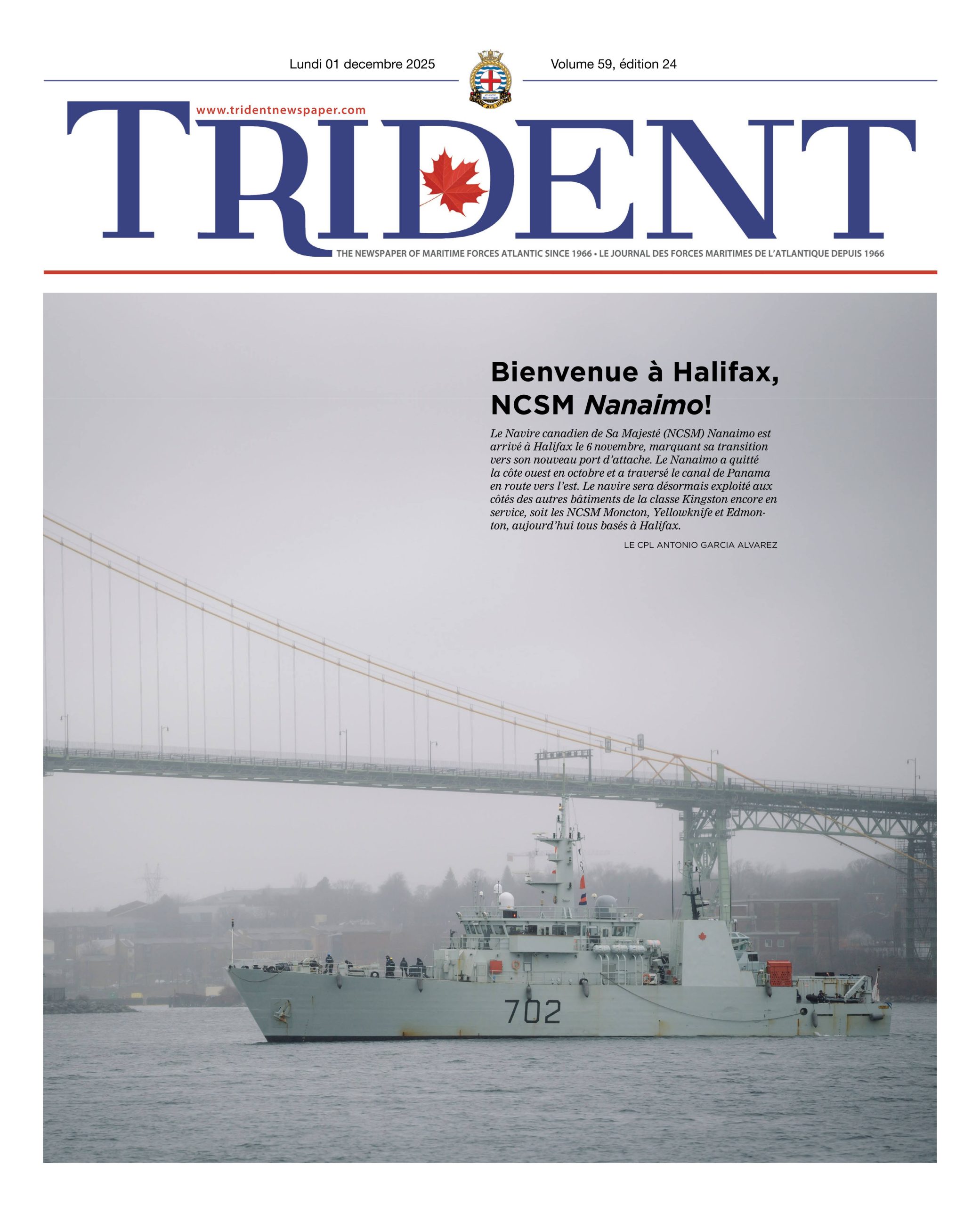
SOUMIS
Key events of the Battle of the Atlantic: January
By CPO1 (ret’d) Pat Devenish,
Canadian Naval Memorial Trust
Editor’s note: The following is a list of Battle of Atlantic incidents that took place in January of each year between 1940 and 1945. Each month during 2020, Trident will include a list of incidents that took place during that month throughout the Battle of the Atlantic.
January 13, 1942 – U-123 strikes first blood in the first major convoy offensive following the United States’ entry into the war, named OPERATION DRUMBEAT and conducted by U-boat wolf packs off the coast of Nova Scotia. Sunk over the following days are the merchant ships Norness, Coimbra, Norvana, City of Atlanta and Ciltvaira. Attacked in the following days by aircraft out of New York City, U-123 manages to escape to open waters to continue her patrols in what was then labelled the “Second Happy Time” for German submarine crews.

SOUMIS
January 15, 1942 – In a gale off Barra Island in the Sea of Hebrides west of Scotland, the Canadian merchantman R.J. Cullen flounders and is wrecked with no loss of crew.
January 16, 1942 – Two Curtiss P-40E Kittyhawks from RCAF Squadron 118 based out of RCAF Station Dartmouth machine-gun a surfaced U-boat 10 miles east of Chebucto Head outside Halifax harbour. Initially assigned to provide air cover for the strategic port of Halifax, 118 Squadron would be transferred to Annette Island in the Aleutians in June 1942, once it became evident that the Luftwaffe would be unable to mount an air attack anywhere in eastern North America.
January 19, 1942 – Bound for the West Indies from Montreal and after having stopped in Halifax and Boston to pick up British and American passengers, the Canadian passenger freighter Lady Hawkins is torpedoed off Cape Hatteras, North Carolina by U-66. Of 321 passengers and crew, just one for her five lifeboats is found, five days after the sinking, with 71 survivors on board.
January 22, 1942 – Following a reorganization of the Naval Service Headquarters in Ottawa, the Canadian Naval Board is established. When in session, it will display a flag similar to that of the original flag of Britain’s Lord High Admiralty, then used by the Royal Navy Naval Board, with a switch to a red and blue background as opposed to the solid red background used by the RN.

January 1, 1943 – Foundering in heavy seas in a storm off Trinidad in the Caribbean Sea, the Canadian merchantman Hamildoc sinks with no loss of life.
January 13, 1943 – U-224 is sunk by depth charges and ramming while patrolling the approaches to the Atlantic Ocean at the western end of the Mediterranean Sea by the corvette HMCS Ville de Quebec. The corvette had been assigned to the Londonderry to Gibraltar route since November 1942.
January 19, 1943 – The corvette HMCS Port Arthur, in company with the destroyer HMS Antelope, sinks the Italian submarine Tritone in the chokepoint at Gibraltar between the western Atlantic and the Mediterranean Sea. Being assigned as part of the Canadian contingent to Operation TORCH (Allied land in North Africa) in September 1942, Port Arthur was part of the newly formed Escort Group escorting convoys from the UK to Gibraltar and later to North Africa.
January 7, 1944 – As part of Escort Group 6 conducting offensive sweeps against U-boats in the Bay of Biscay, the Canadian corvette HMCS Waskesiu is narrowly missed by a torpedo which continues on striking and sinking the frigate HMS Tweed. The torpedo was fired by U305.
January 8, 1944 – HMCS Camrose et le HMS Bayntun share a victory southwest of Ireland, sinking U-757 with depth charges. They were part of Escort Group (EG) 6, escorting a convoy from the UK to Gibraltar.
January 19, 1944 – Initial preparations for D-Day landings in Europe call for the clearing of all enemy shipping from the English Channel. German convoy interception patrols codenamed Tunnel commence on this night with a Task Group of seven ships, including HMC Ships Iroquois, Athabaskan et Haida patrolling off the coast of France. Although this patrol encounters no enemy ships, Tunnel patrols continue nightly until June. Some of these patrols would be witness to the last major naval battles of the North Atlantic.






